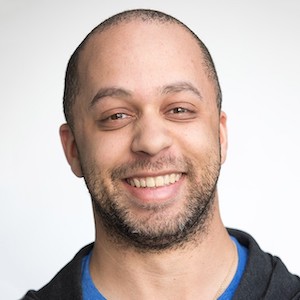At Tidepool, where I work as a Community and Clinic Success Manager, the company's mission is to make diabetes software more accessible, meaningful, and actionable. Operating in the open is how we achieve that. Tidepool's diabetes management software is an open source platform free for both clinicians and people impacted by diabetes. And, because the company is a nonprofit, it also operates according to the transparency rules that govern 501(c)(3) organizations.
 Christopher SniderThis approach means that open source healthcare software can be driven by the people most affected by it—in the case of Tidepool, the diabetes community. The solutions that come from this process put the needs of individual users first, from the design phase to implementation.
Christopher SniderThis approach means that open source healthcare software can be driven by the people most affected by it—in the case of Tidepool, the diabetes community. The solutions that come from this process put the needs of individual users first, from the design phase to implementation.
Radical transparency in healthcare
Tidepool has developed an ecosystem of products that integrate diabetes data from over 60 different insulin pumps, blood glucose meters, and continuous glucose monitors into a single, intuitive user interface. People with diabetes, their care teams, and clinicians can view and analyze data then discuss potential treatment adjustments. Diabetes management tools vary greatly from person to person, so a device-agnostic platform is critical to accessing data to help maintain good control, especially for people with diabetes who require insulin to manage their blood glucose levels.
An ethos of openness can go beyond making source code open. Tidepool's employee handbook is available for others to use or even copy as a start for their own operations. Likewise, its kanban boards used to manage project tasks are publicly available. If someone in the diabetes or development community wanted to see what was happening in an upcoming sprint, they could dig in and follow a task from assessment and development, to review and testing, all the way through to approval and deployment. Tidepool's Git repositories provide a source of truth for all its products and services so that you can see every single pull request, peer review, and release.
Radical transparency also means making Tidepool's Quality Management System publicly available for inquiring minds who want to know how the company operates. That way, other developers can potentially build out their own set of standard operating procedures for confidently navigating a regulated industry. Tidepool publishes meeting minutes with the FDA, so anyone can follow along with the documents presented to the agency for regulatory-related meetings as well as the agency's response.
This philosophy of radical transparency that takes advantage of open source software has some powerful side effects. For example, groups across the world fork Tidepool's code and spin up instances of the platform localized to regions in South America, Europe, Asia, Australia, and Africa. The company has contributed to external projects and repositories through the course of its own development work while also benefiting from the work of open source contributors. Tidepool has verified and accepted hundreds of pull requests from open source contributors who help add new features or catch more edge cases. Those developers who take the time to make open source healthcare software better have the opportunity to improve the lives of hundreds of thousands of people.
Open source software development benefiting the community
The most recent development from these contributions is a community-driven project called Tidepool Loop, an interoperable automated insulin dosing application that was submitted to the FDA in December 2020. The project leverages open source work pioneered by the DIY diabetes community and champions of the #WeAreNotWaiting movement—a call to action for developers and entrepreneurs in the diabetes community to build and champion open source, standards-based, interoperable solutions for diabetes management.
It started with DIY Loop—a community-driven project that turned an iPhone into a controller for an automated insulin dosing system for people with diabetes. Tidepool then forked that source code and, from that incredible foundation, developed this first-of-its-kind app. Below, award winning actor Victor Garber, who was diagnosed with type 1 diabetes in 1962, speaks to the importance of our work to develop and deliver Tidepool Loop to the masses.
This project is revolutionary for many reasons, but chief among them is how it all started with highly motivated members of the diabetes community looking to better their own lives or the lives of the people they care for. The practical realities of open source software development mean companies like Tidepool can build upon previous work, and aspects of Tidepool Loop's development can, in turn, benefit the DIY community.
This entire approach is centered around Tidepool's philosophy of radical transparency. Not every user of open source healthcare software is going to pay attention to every single line of code, but open and transparent operations demonstrate our organization's commitment to the communities it serves.
You can learn more about Tidepool and its work to make diabetes data more accessible, meaningful, and actionable on its website.
About the author
is the More…]
This article was published in Opensource.com. It is republished by Open Health News under the terms of the Creative Commons Attribution-ShareAlike 4.0 International License (CC BY-SA 4.0). The original copy of the article can be found here.